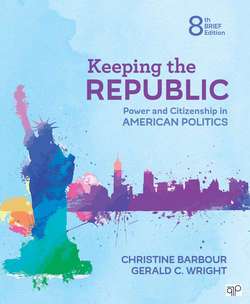Читать книгу Keeping the Republic - Christine Barbour - Страница 125
На сайте Литреса книга снята с продажи.
What Is Federalism?
ОглавлениеAlthough the founders of the U.S. Constitution could have created a unitary system (87) or confederal system (87), they instead established a government based on federalism (84), in which some powers are held by the national government and some by the states; others, called concurrent powers (85), are held by both. Political scientists once held to a theory called dual federalism (86) that considered the powers of the two levels to be separate and distinct but now understand their powers to be interrelated, a view known as cooperative federalism (86). The Constitution gives a decisive amount of power to the national government via the enumerated powers of Congress (85), which concludes with the necessary and proper clause (85) and the supremacy clause (85).
Federalism reflects a continually changing compromise between advocates of a strong national government and advocates of strong state governments. The balance of power adopted between central and subnational governments directly affects the national government’s ability to act on large policy problems and the subnational units’ flexibility in responding to local preferences. Although power was concentrated at the national level for much of the twentieth century, we are currently in a phase known as devolution (84)—shifting power from the national level to the states.
